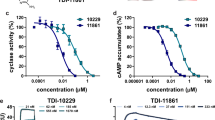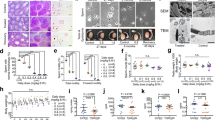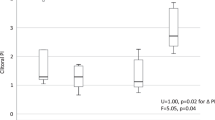Abstract
REVERSIBLE sterility has been demonstrated using a variety of chemical compounds1. The most popular and effective chemicals used as contraceptives in human populations have been the anti-ovulatory hormones and the spermacidal vaginal foams and jellies used by women1,2. During the last two decades the possibility of a chemical contraceptive for males has received increasing attention1. The inhibition of either spermatogenesis or sperm motility has been the apparent mechanism of action for most of the compounds reportedly tried in laboratory animals1,3. The bulk of these compounds are, however, alkylating agents which effectively block spermatogenic meiosis and/or mitosis by an apparently non-specific interference with DNA replication1. Thus they have not been used in studies with humans due to their inherent carcinogenic and mutagenic potential1. Another group of compounds the contraceptive potentials of which have hitherto received only academic interest1 are the anti-androgens. To be a practical contraceptive agent an anti-androgen, or any other compound, should not reduce libido or sex drive, nor should it interfere with the external sexual organs, nor should it produce irreversible effects. The synthetic steroidal anti-androgen cyproterone acetate (6-chloro-17-hydroxy-lα,2α-methyl-enepregna-4,6-diene-3,20-dione acetate) (CA) appears to possess these characteristics. CA does not inhibit the normal display of sexual behaviour, nor does it alter the histological characteristics of the glans penis4,5. In an apparently competitive manner6,7, however, CA is capable of blocking many of the stimulatory effects of both endogenous and exogenous androgens including the maintenance of weight and normal histology of the seminal vesicles and the ventral prostate5,6. Furthermore, in hypophysectomized male rats CA can prevent the completion of spermatogenesis, otherwise maintained by exogenous androgen therapy8. These findings, which indicate that CA can have a strong inhibitory action on some of the internal accessory sex organs, and an apparent lack of effect on the penis and on sexual behaviour, led us to conjecture that this anti-androgen might serve as an effective contraceptive agent when administered to intact male rats.
This is a preview of subscription content, access via your institution
Access options
Subscribe to this journal
Receive 51 print issues and online access
$199.00 per year
only $3.90 per issue
Buy this article
- Purchase on Springer Link
- Instant access to full article PDF
Prices may be subject to local taxes which are calculated during checkout
Similar content being viewed by others
References
Jackson, H., Antifertility Compounds in the Male and Female (Charles C. Thomas, Springfield, Illinois, 1966).
Johnson, V. E., and Masters, W. H., West. J. Surg. Obst. Gynec., 71, 144 (1963).
Coppola, J. A., Life Sci., 8, 43 (1969).
Beach, F. A., and Westbrook, W. H., J. Endocrinol., 42, 379 (1968).
Whalen, R. E., and Edwards, D. A., Endocrinology, 84, 155 (1969).
Neumann, F., in Methods in Drug Evaluation (edit. by Mantegazza, P., and Piccinini, F.) (North-Holland Publishing Company, Amsterdam, 1966).
Whalen, R. E., Luttge, W. G., and Green, R., Endocrinology, 84, 217 (1969).
Neumann, F., and Berswordt-Wallrabe, R. von, J. Endocrinol., 35, 363 (1966).
Author information
Authors and Affiliations
Rights and permissions
About this article
Cite this article
WHALEN, R., LUTTGE, W. Contraceptive Properties of the Anti-androgen Cyproterone Acetate. Nature 223, 633–634 (1969). https://doi.org/10.1038/223633a0
Received:
Issue Date:
DOI: https://doi.org/10.1038/223633a0
Comments
By submitting a comment you agree to abide by our Terms and Community Guidelines. If you find something abusive or that does not comply with our terms or guidelines please flag it as inappropriate.



